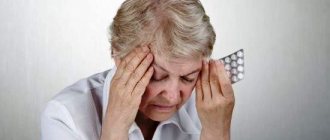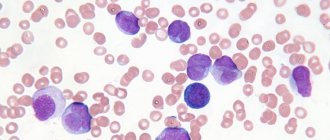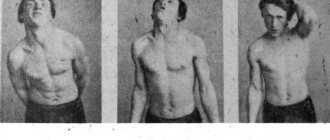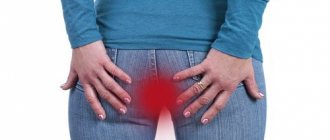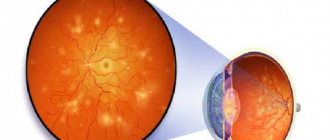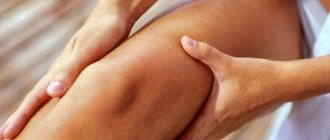Lymphadenitis is an inflammatory disease of the nodes of the lymphatic system, often of a purulent nature.
As a rule, this is not an independent disease, but a symptom of another pathological process occurring in the body, or a signal of a decrease in protective functions. Common signs of the disease are systemic and local increase in body temperature, skin hyperemia, swelling and itching in the area of the lymph nodes.
Symptoms of lymphadenitis most often appear on the neck, as well as in the axillary area and groin. Enlarged lymph nodes can be single or observed simultaneously in different parts of the body.
What it is?
Lymphadenitis is an inflammatory process that occurs in the nodes of the lymphatic system, that is, in the lymph nodes. These nodes are peripheral organs that contain very important cells responsible for protecting the body. These cells have a close relationship with the circulatory system. You can imagine the lymph nodes as a kind of filters that do not allow harmful substances into the body and prevent them from spreading.
Lymph nodes become inflamed most often due to infection, i.e. infection of the body by microorganisms that cause disease. Bacteria are carried throughout the body by blood and lymph, and settle in the lymph nodes, causing their inflammation. Depending on the type of infection, lymph nodes in different parts of the body may become inflamed. Thus, lymphadenitis in most cases is a consequence of some infectious process occurring in the body.
Modern methods of treating lymphadenitis and prognosis
The specific treatment regimen depends on the type of infectious pathogen that caused the manifestation of the disease in the lymph nodes. Treatment of lymphadenitis should begin as early as possible in order to prevent chronic and recurrent course of the disease, which are much more difficult to treat.
What does a general therapeutic regimen usually include?
- Broad-spectrum antibiotic therapy After clarifying the species of the pathogen, treatment is adjusted.
- Drugs that reduce pain and body temperature.
- Medicines that reduce the level of swelling in the area of the pathological focus.
- Surgical drainage of the affected lymph node.
The prognosis for any form of lymphadenitis is favorable, with the exception of the development of low-quality formations in the parenchyma of the lymph node. In this case, there is a high risk of metastases spreading through the lymph flow.
Rate
—
Causes
Lymphadenitis is a secondary condition; it is preceded by a primary disease, which gives rise to the inflammatory process. It is very difficult to diagnose lymphadenitis and this requires a thorough analysis of the collected anamnestic data and the necessary procedures to make an accurate diagnosis.
Thus, the cause of specific lymphadenitis can be pulmonary tuberculosis, actinomycosis, yersiniosis, syphilis and human immunodeficiency virus. If a person discovers that his lymph nodes are enlarged, he needs to consult a specialist.
Diagnosis of lymphadenitis is carried out according to which disease the doctor is inclined towards. For example, if the lymph nodes in the neck, lower jaw or armpit are inflamed, and there are also clinical symptoms such as increased sweating, fatigue and adhesions of the lymph nodes, then this suggests that the patient has tuberculosis. To confirm the diagnosis, an X-ray of the lungs is taken, the condition of the respiratory organs is analyzed by introducing a bronchoscope, and a general blood and urine test is prescribed.
But there are cases when identifying the causes of lymphadenitis is quite simple. When the enlargement of the lymph nodes corresponds to only one zone, then the cause of the pathological process is in the area of a certain area of lymph drainage. For example, if there is suppuration of the arm, this indicates that the lymph nodes of the armpit are inflamed, since lymph from this part of the human body accumulates in these nodes. But it happens that the lymph nodes, which perform a barrier function, do not allow microorganisms to penetrate the lymphatic system, and then the inflammatory process is insignificant.
Furunculosis, carbunculosis, erysipelas, osteomyelitis, thrombophlebitis, trophic ulcers are constant companions of lymphadenitis. Enlargement of the lymph nodes also occurs with diseases of the ENT organs (tonsillitis, tonsillitis, pharyngitis, otitis), with childhood infections (mumps, diphtheria, scarlet fever) and with skin diseases (pyoderma, diathesis of various etiologies, eczema). These causes of lymphadenitis are nonspecific, because the disease is caused by ordinary streptococci and staphylococci, which are always present in the patient’s body, but are activated only after negative influences influence it.
Causes ↑
Pathology can be divided into two main groups:
- nonspecific;
- specific.
The causative agents of the nonspecific form of the disease are, as a rule, all kinds of pyogenic microbes that enter the lymph nodes from foci of inflammation, accompanied by purulent processes, along with the bloodstream or through close contact.
This disease is divided into purulent and non-purulent, and according to the form of its course it is divided into acute and chronic. Purulent lymphadenitis forms a focus of suppuration called adenophlegmon.
A specific form of lymphadenitis is caused by pathogens of such well-known diseases as: tuberculosis, syphilis, gonorrhea, actinomycosis, plague, anthrax, tularemia and other similar infections.
Lymphadenitis in children is caused by diseases of the throat, nose and ears, common childhood infections and skin diseases.
Lymphadenitis in children is especially common in autumn and winter, when chronic diseases worsen and respiratory infections are present.
The mechanism of occurrence of lymphadenitis
Lymph nodes are a kind of biological filter for infection, which can penetrate into areas of skin damage or internal organs.
Lymph nodes filter particles of decayed tissue, microbes and their toxins within themselves, resulting in an inflammatory reaction and an increase in the size of the lymph node. In this case, often the primary lesions can already completely heal by the time the lymph nodes enlarge and suppurate.
On the one hand, the enlargement of the lymph nodes and their inflammation is an attempt by the body to isolate itself from the spread of infection throughout the body, but on the other hand, the concentration of infection in the lymph nodes with the inability of the body to quickly overcome it is the formation of an extra focus of microbes, the formation of ulcers and the possibility of spreading from them infections deep into the body.
Often, when special infections develop inside the lymph nodes, the infection and inflammation can persist for a long time, sometimes up to months or years.
Most often, lymph nodes are affected in the head, neck, armpits, less often in the groin, under the knees or in the elbows. Sometimes lymphadenitis of deep intra-abdominal nodes occurs, which is called mesadenitis.
Classification
There are several criteria by which lymphadenitis is classified. The duration of the disease determines the acute or chronic form, the type of infectious agent divides the pathology into specific or nonspecific, the nature of progression determines the classification into purulent or non-purulent. The forms differ in the following characteristics:
- The nonspecific type occurs due to the penetration of streptococci, staphylococci and other pyogenic microbes into the body, releasing toxins and provoking processes of tissue decay. Lymph nodes concentrate invading pathogens and increase in size.
- The specific type is caused by tumors or diseases such as AIDS, tuberculosis, toxoplasmosis, tularemia, infectious mononucleosis, sarcoidosis, actinomycosis, brucellosis.
- The purulent form is characterized by inflammation of the tissue around the infected lymph node, which leads to swelling. The main characteristic of this form is that suppuration and infiltration can break out.
- The non-purulent type is determined by the fact that the inflammation is limited to the lymph node.
- The catarrhal form is characteristic of the first stage of the disease. Inflammation occurs due to a violation of capillary permeability, as a result of which blood penetrates into the tissue of the lymph node.
- The hyperplastic type appears in the last stages of the disease. Its features include hyperplasia (proliferation) of lymphocytes of the inflamed lymph node and strong infiltration of leukocytes.
Depending on the location of the occurrence of inflammatory processes, lymphadenitis can be cervical, submandibular, or inguinal.
- Cervical lymphadenitis is associated with various inflammatory and tumor processes. Lymph from all parts of the body passes through the neck area completely or partially. Acute streptococcal pharyngitis, paratonsillitis, tonsillitis, diseases of the teeth and oral cavity, respiratory viral infections may be accompanied by acute or chronic lymphadenitis. In diagnosis, the location of the inflamed lymph nodes is important. Nodes located at the back of the neck may change in size with rubella and toxoplasmosis, and enlargement of the parotid nodes is observed with infections of the conjunctival membrane.
- Submandibular lymphadenitis is more common and is observed in most cases in childhood and adolescence. The development of lymphadenitis is complicated by inflammation of the pharyngeal tonsils. Submandibular lymph nodes enlarge during dental inflammatory processes in the oral cavity, exacerbations of chronic tonsillitis. Such lymphadenitis resolves with the cure of the underlying disease.
- Inguinal lymphadenitis - most often its cause is inflammatory diseases of the external and internal genital organs, which are of an infectious nature. Purulent processes in the lower part of the torso and extremities can cause enlargement of the inguinal lymph nodes.
Symptoms of acute lymphadenitis
In the acute form of the disease, there is a rapid increase in negative symptoms. The cause of the development of the pathology is damage to the lymph node by a highly virulent infection.
Symptoms:
- Edema and hyperemia are local phenomena that characterize the struggle of lymphocytes with viruses and pathogenic bacteria.
- Loss of appetite, weakness, headache - develop against the background of poisoning of the body with toxins released by inflammatory agents.
- Suppuration in the area of the lymph node - if pus forms, then we are talking about the development of an abscess; sometimes purulent melting of the lymph node occurs.
- Development of tachycardia - when the process is neglected, inflammation increases and causes complications on the cardiovascular system.
- Gas crepitus - when palpating the affected lymph node, a slight crunching sensation is felt.
- Violation of the functional characteristics of the location of inflammation - due to severe pain, a person cannot move an arm or leg, neck, depending on the area in which the lymph node is inflamed.
In the absence of timely therapy, the disease flows into the purulent phase, which ultimately leads to destruction (melting) of the node with the development of adenophlegmon or abscess. The process is accompanied by general weakness, chills, fever and muscle pain. In some cases, acute lymphadenitis is a symptom of cancer.
Symptoms of chronic lymphadenitis
The chronic form of the disease can last for several months, and in some cases for several years. The disease begins to develop when infected with weakly virulent pathogens or is the result of an untreated acute form of lymphadenitis, when the inflammation has become protracted.
Symptoms may include:
- pain in the area of regional lymph nodes.
- In this case, there is an increase in lymph nodes and their pain during palpation.
If the disease process progresses and periadenitis develops, then the described symptoms may worsen.
- Painful sensations become sharper, the skin over the lymph nodes becomes hyperemic, and when palpating the nodes the patient feels pain.
- Lymph nodes, which previously could be very clearly palpated, now merge with each other and with the surrounding tissues, and they also become immobile.
The chronic form is characteristic of specific lymphadenitis and has a localization depending on the location of the lymph node (cervical, inguinal, submandibular and others).
Symptoms and signs of lymphadenitis
The main signs or symptoms of lymphadenitis in adults are:
- suppuration;
- boils;
- phlegmon;
- hyperemia of the skin near the lymph nodes;
- pain in the area of the lymph nodes;
- migraine;
- lack of appetite or its noticeable decrease;
- general malaise;
- swelling.
Further accumulation of pus and an abscess may occur. If you do not open it in a timely manner, then the contents have a risk of breaking through, causing fever, tachycardia and damage to the body by toxins.
The disease “lymphadenitis” in its already persistent chronic form is not accompanied by acute unpleasant sensations. A slight swelling remains, the pain is mild.
Diagnostics
First of all, the specialist will examine the lymph nodes by palpation. In healthy people, they are quite soft, easily displaceable relative to neighboring tissues, absolutely painless and not enlarged - in patients of normal build, the lymph nodes are generally difficult to palpate; it’s a different matter for thin patients, especially children and adolescents. Further, depending on the results of the examination, a decision will be made on the use of other diagnostic measures, in particular, the following may be required:
- a general blood test showing changes in its composition. In this case, the presence of tumor processes may be suspected - and then a biopsy of the node will have to be performed, i.e. sampling of its tissue for histological examination;
- HIV test;
- Ultrasound of peripheral lymph nodes and abdominal organs (especially the spleen and liver);
- CT scan;
- examination by an ENT doctor;
- a diagnostic and therapeutic operation is carried out in the event of a surgical pathology: opening and draining the resulting cavity, as well as examining adjacent organs and tissues for the presence of purulent wounds and abscesses;
- in pediatric patients, the first step is to exclude (or confirm) Quincke's edema - a life-threatening allergic reaction, as well as congenital cysts and tumors in the neck area, which are very similar to enlarged lymph nodes;
- skin allergy tests, microscopic examinations of sputum and blood, x-rays, recording contact with tuberculosis patients - all these manipulations are carried out if specific lymphadenitis is detected;
- lymphadenitis in the groin area requires excluding the presence of an inguinal hernia, as well as conducting a number of studies in order to confirm (exclude) the presence of sexually transmitted diseases.
Diagnosis of nonspecific lymphadenitis
It is easy to determine the development of acute nonspecific lymphadenitis, when it is localized on the surface, in most cases, because then the clinical signs are clearly expressed.
Difficulties arise when the disease is complicated and advanced, that is, the symptoms of acute nonspecific lymphadenitis are superimposed on the symptoms of other manifestations. In this case, it is difficult to separate them. When the disease becomes chronic, and it is important not to confuse it with leukemia, a lymph node biopsy is taken from the patient.
In turn, the presence of acute nonspecific lymphadenitis can be proven by conducting a number of tests, such as computed tomography and Pirquet and Mantoux tuberculin tests (in total, there are about a dozen such studies).
How to treat lymphadenitis?
So, if the initial stages of lymphadenitis occur, then the treatment is quite conservative:
- creating rest conditions for the affected area;
- physiological treatment: electrophoresis, ultrasound therapy, galvanization;
- anti-inflammatory ointments and drugs.
In most cases, hyperplastic and catarrhal lymphadenitis, which occurs in an acute form, is treated conservatively. The patient is recommended to provide a state of rest for the affected area and is prescribed antibiotic therapy taking into account the sensitivity of the pathogenic flora, as well as vitamin therapy and UHF therapy.
In case of chronic nonspecific lymphadenitis, elimination of the underlying disease that maintains inflammation in the lymph nodes is required. Specific lymphadenitis is treated taking into account the etiological agent and the primary process (syphilis, gonorrhea, tuberculosis, actinomycosis, etc.).
The main thing is to treat the underlying disease, against which inflammation of the lymph nodes has developed. Medicines that are used in the treatment of lymphadenitis are:
- Non-steroidal anti-inflammatory drugs: Ketorolac, Nimesulide;
- Antihistamines: Cetirizine;
- Antibiotics: Amoxiclav, Ceftriaxone, Clindamycin, Benzyllenicillin;
- Antiviral drugs: Acyclovir, Rimantadine;
- Anti-tuberculosis drugs: Ethambutol, Rifampicin, Capreomycin;
- Antifungals: Fluconazole, Amphotericin B.
Operation
Surgical treatment is resorted to in the event of the development of purulent complications of lymphadenitis - abscess and adenophlegmon.
Operation stages:
- Under local or general anesthesia, the purulent focus is opened, pus and destroyed tissue are removed.
- The prevalence of the purulent process and the degree of damage to nearby organs and tissues are determined.
- At the end of the operation, the source of suppuration is washed with antiseptic solutions (for example, furatsilin), the wound is sutured and drained - a special tube (drainage) is installed into the wound cavity, through which inflammatory fluid and pus flow out, and various antiseptic solutions can also be injected.
Treatment with folk remedies ↑
Traditional medicine in combination with medications will also help in the treatment of lymphadenitis. The following folk remedies can provide the best results in treating the disease at home:
Aloe decoction
- a decoction made from aloe leaves is mixed with chopped walnuts and honey;
- We drink the decoction 3 times a day, 1 tbsp. spoon immediately before eating.
Celandine compresses:
- soak gauze with celandine infused with alcohol;
- at night apply to the knot on the neck;
- Cover the celandine compress with a warm scarf.
When treating the disease, echinacea has a positive result, which can be taken orally and made into compresses.
Treatment of lymphadenitis with medications and folk remedies gives a positive effect, the symptoms of the disease decrease, and a long-awaited recovery occurs.
Which doctor should I contact?
If you experience painful enlargement of the lymph nodes in any part of the body, you should consult your family doctor as soon as possible. The doctor will carefully examine the affected area, examine all other groups of lymph nodes, prescribe laboratory tests, and, if necessary, refer you for consultation to other specialists.
Depending on the location and type of lymphadenitis, consultation with the following specialists may be necessary:
- Otorhinolaryngologist (ENT) and/or dentist – for inflammation of the submandibular and cervical lymph nodes.
- Urologist – for inflammation of the inguinal lymph nodes.
- Therapist - for inflammation of the lymph nodes in the chest or abdominal cavity (identified using various instrumental diagnostic methods).
- Dermatologist – for chronic infectious skin diseases.
- Phthisiatrician – for tuberculous lymphadenitis.
- Surgeon - if there are signs of a purulent process in the inflamed lymph nodes.
The main directions in the treatment of lymphadenitis are:
- drug treatment;
- physiotherapy;
- traditional methods of treatment;
- surgery.
Treatment
Chronic lymphadenitis, treatment of which is started on time, goes away after the cause of inflammation is completely eliminated.
Treatment of specific inflammation occurs over a long period of time. In some cases, it takes more than one year. First of all, therapy is aimed at curing the primary disease. The prescription of medications depends on the form of the disease.
The main drugs in the treatment of nonspecific lymphadenitis are antibacterial and anti-inflammatory drugs. They are selected by the doctor depending on the causative agent of the disease. Antihistamines, antipyretics, restoratives and immunity-enhancing drugs are also used.
Compulsory physical therapy course:
- Microwave, UHF.
- Electrophoresis.
- Phonophoresis.
- Paraffin therapy.
In some cases, homeopathic medicines are prescribed to improve lymph circulation and boost immunity.
Prevention
In order to avoid the possibility of the formation of lymphadenitis, it is necessary: timely treatment of any skin wounds and chronic infections, compliance with precautions to prevent injury.
Maintain your immunity at the proper level and consult a doctor promptly. When it comes to nutrition, there are certain foods you should avoid that may increase the inflammatory response. This meat is fatty and coarse-fiber (especially lamb and pork), spicy, salted and smoked; dairy products. Foods rich in vitamin C promote healing.
Stomach cancer Tuberculosis Brucellosis in humans Hemorrhoids Tonsillitis Hepatitis C: first signs and treatment regimen
Prevention of lymphadenitis
In order not to encounter such a serious disease as lymphadenitis, it is necessary to carry out preventive procedures, including:
- Try to avoid injuries near the nodes.
- Avoid infection of injured skin areas.
- Treat chronic diseases in a timely manner.
- Observe hygiene rules.
- Strengthen immunity.
By following these simple rules, lymphadenitis can be avoided. But if the disease has arrived, you should seek help from a qualified doctor who, using modern diagnostic methods, will help you quickly cope with the disease.

